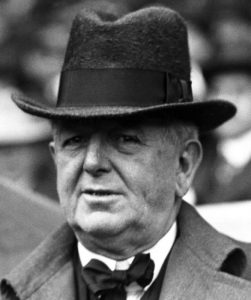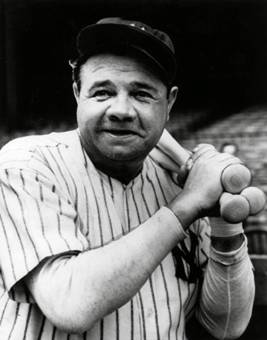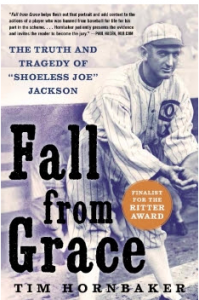Chicago White Sox founding patriarch Charles Comiskey passed up the opportunity to sign Babe Ruth for $16,000 (about $400,000 in today’s money) in 1914, and the letter verifying this offer is now up for auction. A very historical scrapbook from 1909-1914 contains 41 letters and 54 telegrams sent by former Chicago White Sox owner Charles Comiskey to team scout George Mills is now available to the highest bidder at Robert Edward Auctions.
The online auction runs until May 6th, and the current SMR value for a Charles Comiskey signed letter is $1,500. However, the scrapbook’s historical value, especially with regard to the Ruth telegrams, cannot be quantified, as this same scrapbook sold at auction for $16,500 five years ago. Interestingly enough for $500 more than what Babe Ruth himself was offered.
Comiskey had an opportunity to buy the larger than life Yankees slugger, then a pitcher with the Orioles, but turned it down because the Sox needs for pitching at that time were not great enough to warrant that price.
The lot contains three telegrams from the American League founding father discussing Babe Ruth. Telegram one reads: “Follow Baltimore Club and advise of best players there.”
Telegram number two consists of the Old Roman directing Mills to “Secure best price on men mentioned in your wire and when (Orioles Owner Jack) Dunn will deliver advise me at once.” Mills handwrote the names of the players in pencil on the telegram’s base, “Cree, Daniels, Twombley [sic], Midkiff, Derrick, Ruth.”
Years later, Mills’ sister Ethel, wrote: “Note: Earl told me he could have all six men for $18,000 but Comiskey turned thumbs down. Too much money. Ethel.” The final telegram from Comiskey regarding Ruth reads: “Do not need pitchers bad enough to go that high get prices on other men and stay in Baltimore until further advice.”
Mills’ pencil notation, written on the telegram: “Will sell Ruth to Chicago Club for $16,000 cash. Dunn.”
Dunn had signed the bambino right out of St. Mary’s Industrial School for Boys a few months earlier, and he would go on to sell him to the Boston Red Sox, along with Ernie Shore and Ben Egan, for $25,000 in July of that year. You are obviously familiar with how Ruth panned out in Boston, and of course “the curse of the Bambino” that ensued after he was sold to the Yankees.
It was previously known that the Philadelphia Athletics and Cincinnati Reds also passed on the chance to purchase the Sultan of Swat from the Orioles, but as this album conveys, the White Sox actually tossed around the idea of acquiring him first. The iconic book and movie “Eight Men Out,” which depicts the Black Sox scandal of the 1919 World Series, has solidified Comiskey’s historical reputation as an immense cheapskate. These letters, in which he passed up on Babe Ruth due to the price, will no doubt provide only backing for that argument.
However, it’s not entirely true, and certainly not the case at all when it comes to player acquisition.
Fall from Grace, a Shoeless Joe Jackson biography by Tim Hornbaker (Turning the Black Sox White: The Misunderstood Legacy of Charles A. Comiskey and War on the Basepaths: The Definitive Biography of Ty Cobb) which came out in paperback in last month, depicts a very different Comiskey.
As retold by Hornbaker, Comiskey went all out, spending big bucks to acquire Jackson from Cleveland in the middle of the 1915 season.
It was all part of a very aggressive initiative by Comiskey at the time to get the best players available, spend big money to get them, and build a winning ball club.
Paul M. Banks runs The Sports Bank.net and TheBank.News, which is partnered with News Now. Banks, a former writer for the Washington Times, NBC Chicago.com and Chicago Tribune.com, currently contributes regularly to WGN CLTV and the Tribune company’s blogging community Chicago Now.
Follow him on Twitter, Instagram, Sound Cloud, LinkedIn and YouTube.



